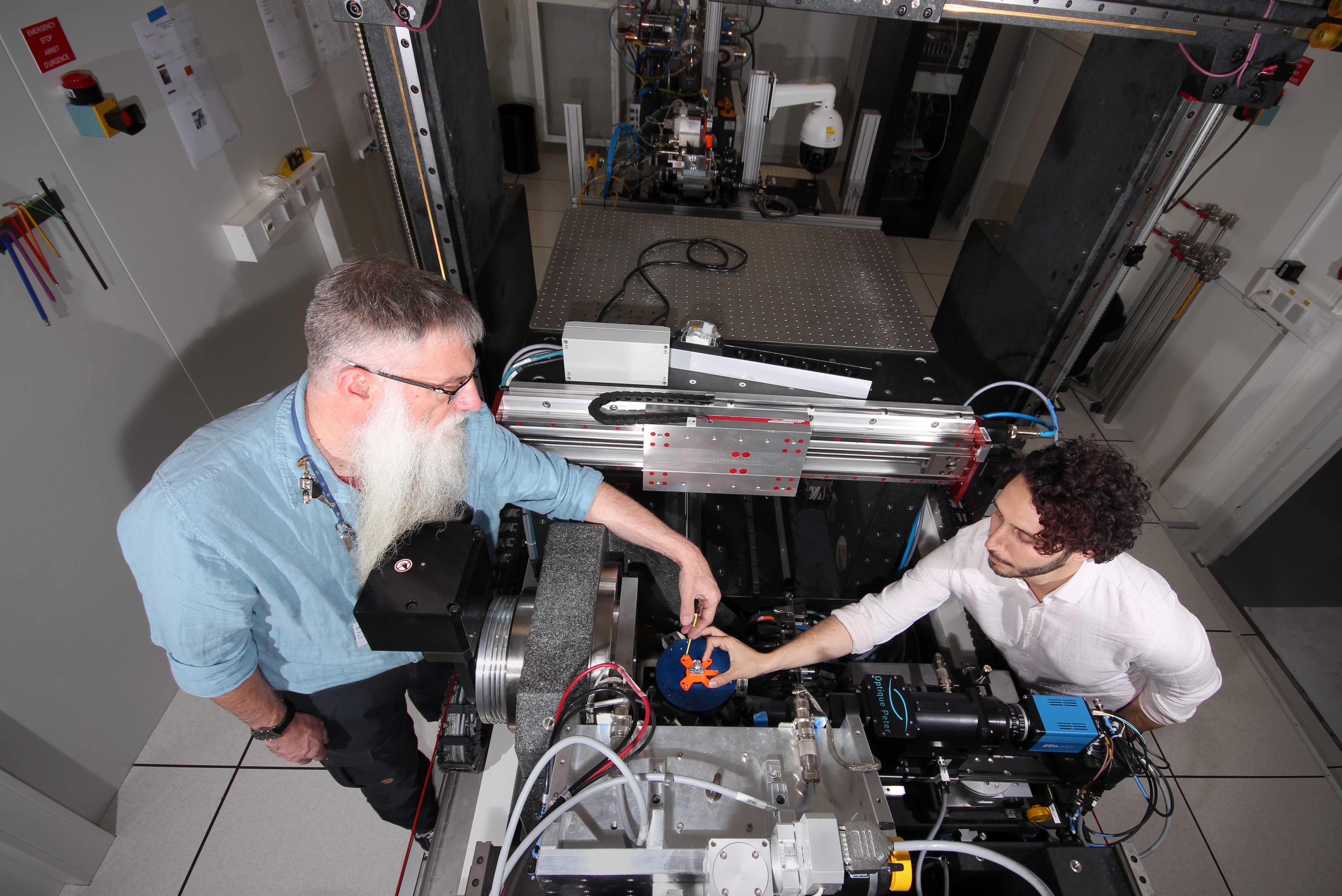- Home
- News
- General News
- Inauguration and...
Inauguration and first users for ID03 beamline
24-05-2024
The new ID03 beamline is in full swing this month. On 23 May, the members of the Scientific Advisory Committe (SAC) inaugurated this new beamline dedicated to dark field X-ray microscopy, a unique technique that is not available anywhere else in the world. And earlier this month, researchers from Technical University of Denmark (DTU) were the first users working in metals under stress.
Flagship beamline ID03 welcomes first users
They were the first users, but already knew the beamline inside out. “We’ve dedicated two years of my ERC Advanced Grant to contribute to the design of the new beamline”, explains Henning Poulsen, leader of the team and Professor at Technical University of Denmark (DTU). “It is very reassuring to see that the technique we’ve developed with the ESRF can answer our questions on materials science”, he adds. The contribution of DTU has resulted from three ERC (European Research Council) grants: two Advanced Grant led by Henning Poulsen and one Starting Grant led by Hugh Simons.

Henning Poulsen (right) and his team, with Carsten Detlefs (in the background)
The question that Poulsen and his team are trying to answer is what happens in metals when you apply tensile stress or strain, which is useful for future lighter and stronger materials for energy and aerospace applications.
Many physical and mechanical properties of these materials depend on their internal structure, which is organised into grains of different sizes. The technique of dark field X-ray microscopy on ID03 maps in 3D orientations and stresses from 100 nanometres to 1 millimetre and allows zooming in and out in both direct and angular space.
The collaboration between Poulsen’s team and the ID03 staff, led by Carsten Detlefs, comes a long way. They started developing the technique of Dark X-ray microscopy several years ago and built the beamline from scratch. The significance of the novel technique became evident when Poulsen received an ERC Advanced Grant to contribute to its development.
This technique, which can only be carried out at the ESRF, allows studying materials at different scales. Unlike bright field microscopy, where the sample is seen on a bright background, dark field microscopy detects only light that is scattered by the sample, not from direct illumination. In case of dark-field x-ray microscopy, the signal originates from Bragg diffraction. This new technique is therefore ideal for crystalline materials like most metals, ceramics, rocks, ice, semiconductors, etc.
Attracting ERC research
The unique capabilities of ID03 have already been awarded by four ERC grants. In addition to the contribution of DTU through three ERC grants to Henning Poulsen and Hugh Simons, ESRF researcher Can Yildirim, specializing in material science and diffraction imaging, received an ERC starting grant in 2023.
Can Yildirim is using the new ID03 beamline for his research project entitled "Deformation and Recrystallization Mechanisms in Metals (D-REX)," which objective is to develop a groundbreaking technique for unraveling the 4D local structures and recrystallisation processes within metals.
Yildirim’s project aims to develop pink beam Dark Field X-ray Microscopy (pDFXM) to understand and visualise local structural phenomena in metals, especially recrystallisation. Yildirim emphasizes the significance of the new beamline: "The recently established ID03 beamline at ESRF is pivotal for my research; without it, this project simply would be unfeasible."

Carsten Detlefs and Can Yildirim. Credit: Jeff Wade
Top image: Inauguration of ID03 by the Scientific Advisroy Committee and ESRF Management. From left to right: Francesco Sette, ESRF DG, Giacomo Ghiringhelli, chair of the SAC, Gema Martinez-Criado and Michael Krisch, Directors of Research, Carsten Detlefs, beamline responsible, Can Yildirim



